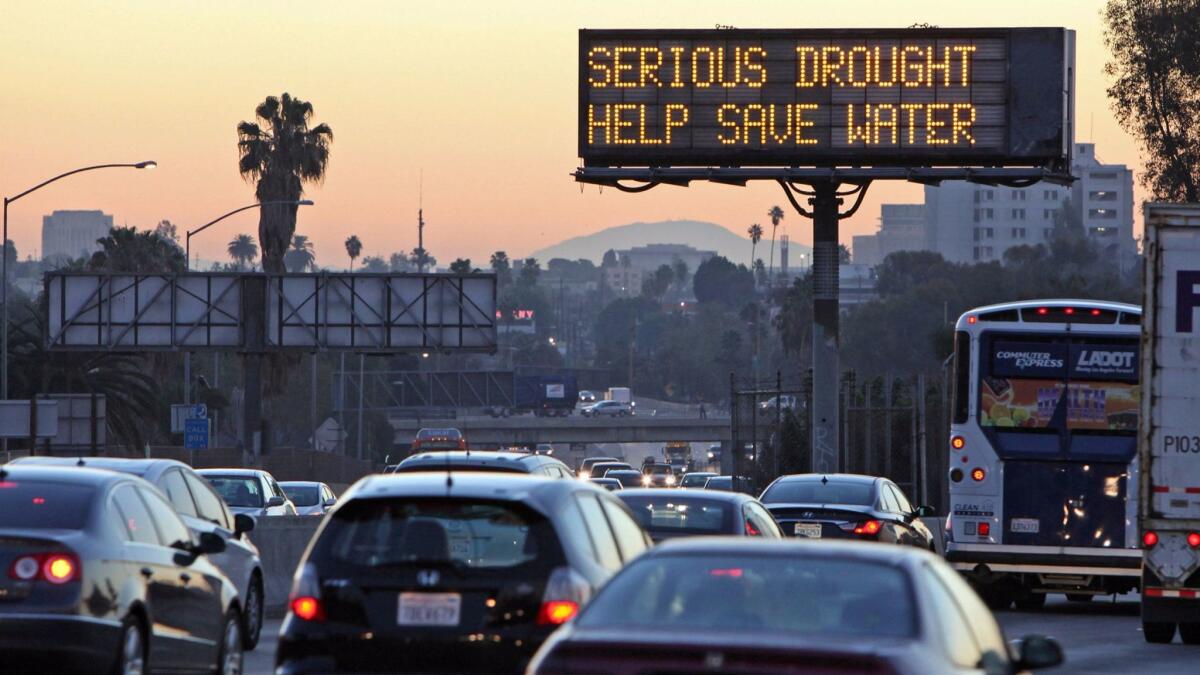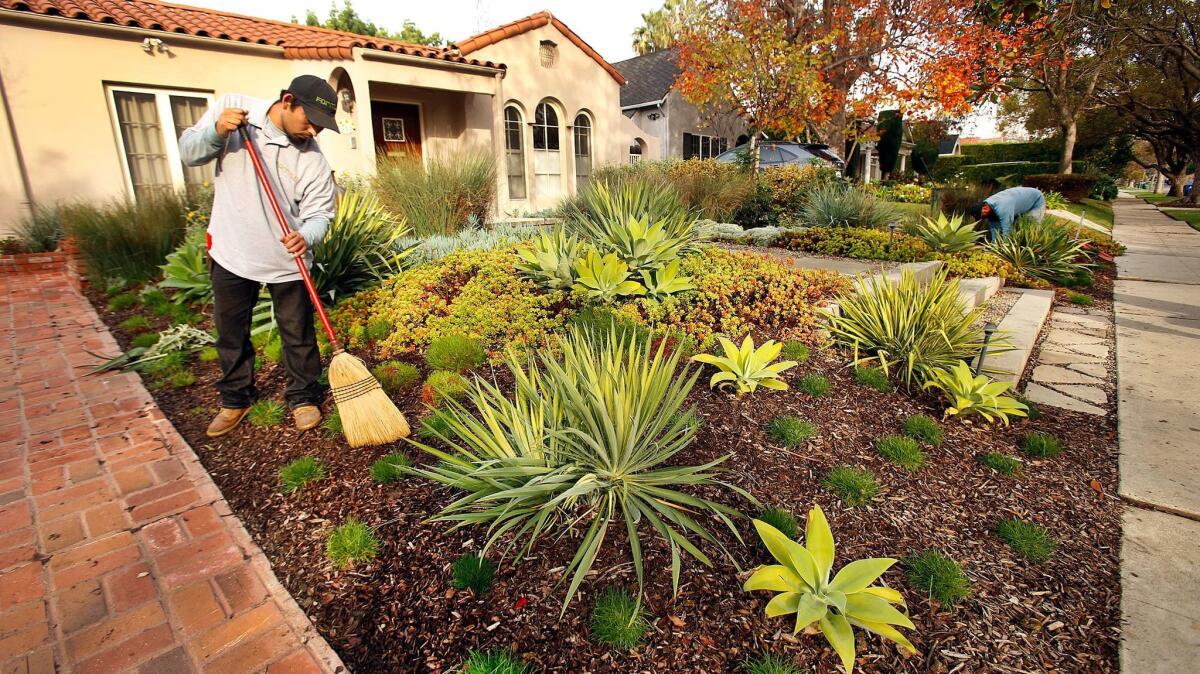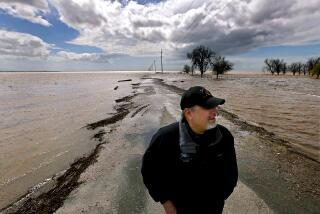More ink, less water: News coverage of the drought prompted Californians to conserve, study suggests

What does it take to get Californians to save water during a massive drought? Apparently, a lot of ink and newsprint helps.
Extensive news coverage of the state’s historic drought prompted residents to conserve water, new research out of Stanford University suggests. The more that major newspapers wrote about the drought, the more people in the Bay Area cut back on their personal water use, according to a report this week in the journal Science Advances.
Indeed, the overwhelming volume of news stories appears to have motivated Californians to conserve even before Gov. Jerry Brown ordered mandatory water restrictions on April 1, 2015.
The fact that people reduced their water use when they didn’t absolutely have to caught the attention of Newsha Ajami, the director of urban water policy for Stanford’s Water in the West initiative. Ajami wondered whether the media had anything to do with it.
To find out, she teamed up with Kimberly Quesnel, a graduate student in Stanford’s department of civil and environmental engineering.
The pair searched the story archives of six California newspapers (the Los Angeles Times, San Diego Union-Tribune, San Francisco Chronicle, San Jose Mercury News, Sacramento Bee and Orange County Register) and three others (USA Today, the New York Times and the Wall Street Journal) to tally all of the drought-related stories that were published.
Their target period of July 2005 to June 2015 included not one but two droughts.
The first occurred from 2007 to 2009, brought about by a combination of “record low precipitation” and “increased demand from urban areas,” the study authors explained. By February 2009, the drought had become so bad that then-Gov. Arnold Schwarzenegger declared a statewide drought emergency.
The second drought began in 2011, kicking off the driest four-year stretch in California’s recorded history. By 2014, “exceptional drought” conditions were widespread in the state.

Relief finally arrived with El Niño rains in 2016 and atmospheric river-fueled storms in 2017.
If only one of these droughts sounds familiar, that may be because only one of them rated as a big news story. (Hint: It wasn’t the first one.)
Back in 2007, 2008 and 2009, the drought “received limited media attention,” the study authors wrote. Newspapers published “a few” stories in the summer of 2008, after Schwarzenegger issued an emergency proclamation for certain counties in the Central Valley. When that emergency was extended to the entire state in 2009, the story count was even lower.
Ajami and Quesnel noted that at the time, newspapers — and their readers — were preoccupied with other big stories. Among them: the presidential election that put Barack Obama in the White House and the country’s worst economic crisis since the Great Depression.
The situation was different by 2012, when newspapers began paying attention to another worsening drought. The number of stories on the subject began “rapidly increasing” in January 2014, when Brown declared a state of emergency.
Was anyone actually paying attention to all those stories? The answer, it seems, is yes.
Ajami and Quesnel turned to Google Trends to see how often people conducted internet searchers for the term “California drought” during the 10-year study period. They found a very high correlation between the number of Google searches and the number of newspaper stories — when one was low, the other was too. Ditto when both were high.
To see whether that had any effect on water usage, the researchers examined customer records in the areas served by the Bay Area Water Supply and Conservation Agency. The pair focused on water use by single family residences.
When they compared news coverage to water use, they found a distinct pattern: The more that newspapers wrote about the drought, the more people searched for it on Google and the more residential water use fell.
How much? For every 100-story increase in the number of drought-related newspaper stories published over a two-month period, residential water use fell by 11% to 18%, according to the study.
Other factors appeared to influence water use as well. For instance, when unemployment went up, water use went down, presumably because people were looking for ways to cut household expenses, the researchers wrote. Changes in the temperature also predicted changes in water use.
But the effect of newspaper articles was distinct.
“The 2011-2016 California drought was unprecedented not only hydrologically but also in terms of widespread political action and publicity,” the study authors wrote. “Residential water use decreased at the fastest rate after media coverage of the drought ramped up.”
Follow me on Twitter @LATkarenkaplan and “like” Los Angeles Times Science & Health on Facebook.
MORE IN SCIENCE
Stripes? Spots? Scientists have new way to see what dinosaurs looked like on the outside
How scientists hope to treat diseases by editing our RNA
Growing pains: The oldest trees on Earth ripped themselves apart, fossils show







